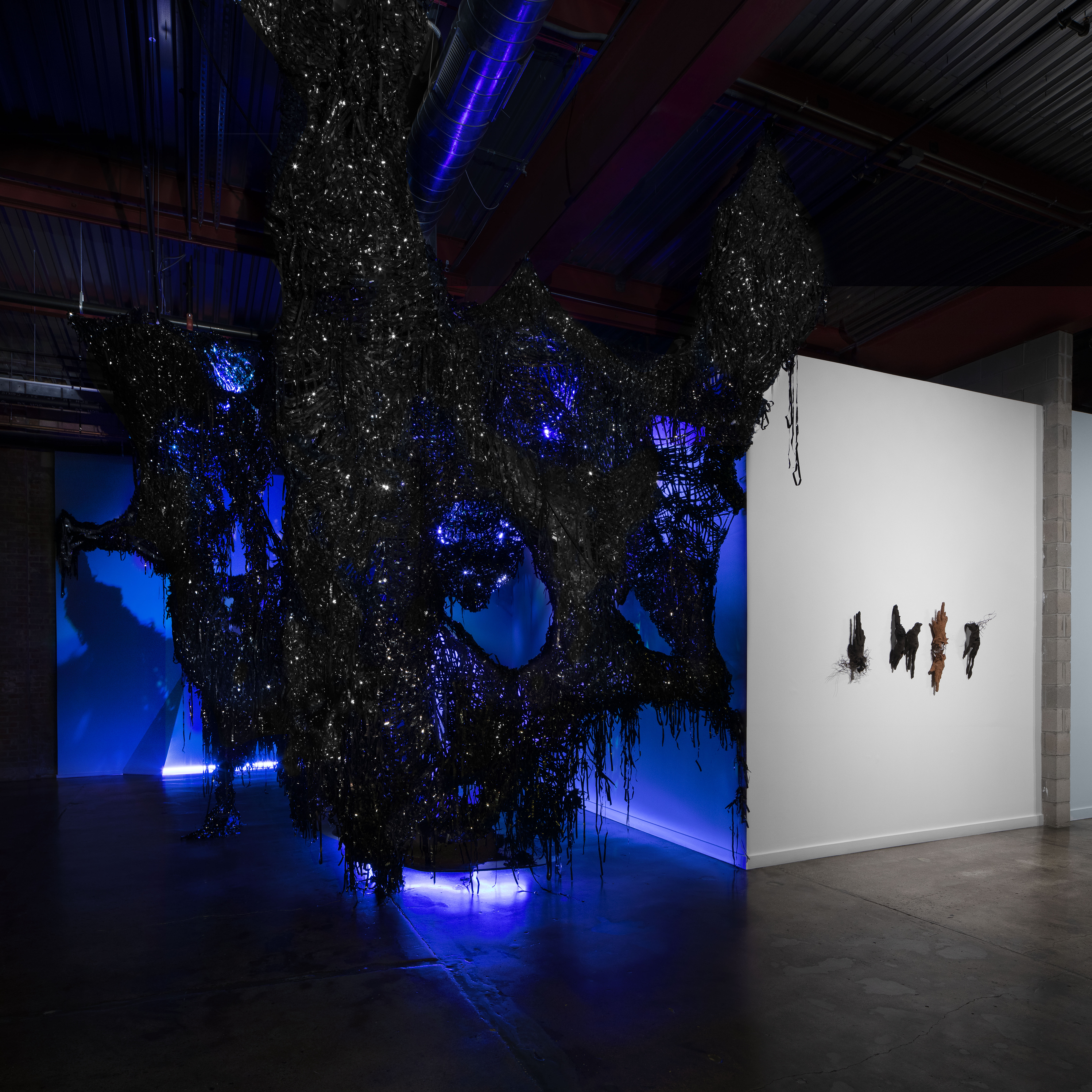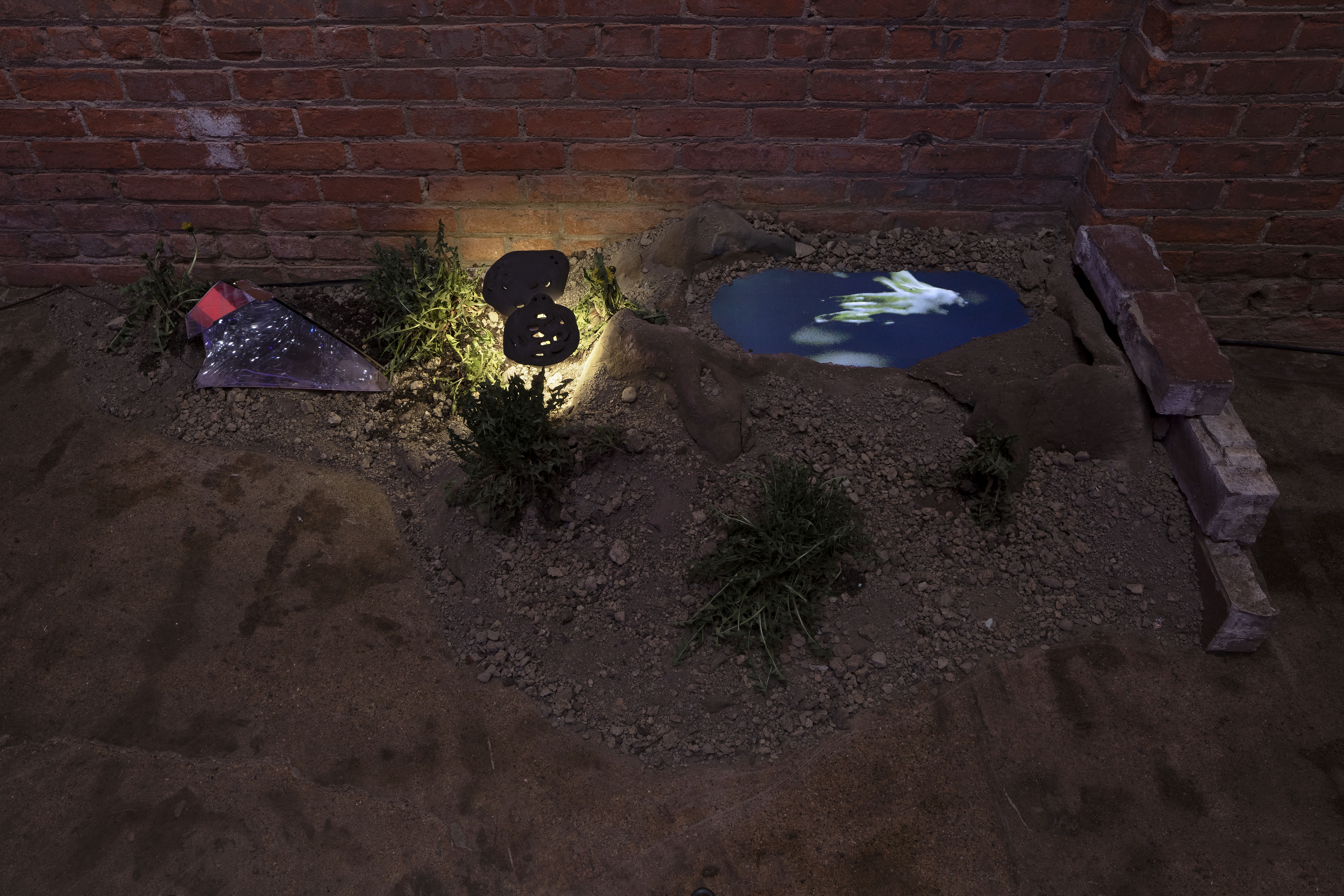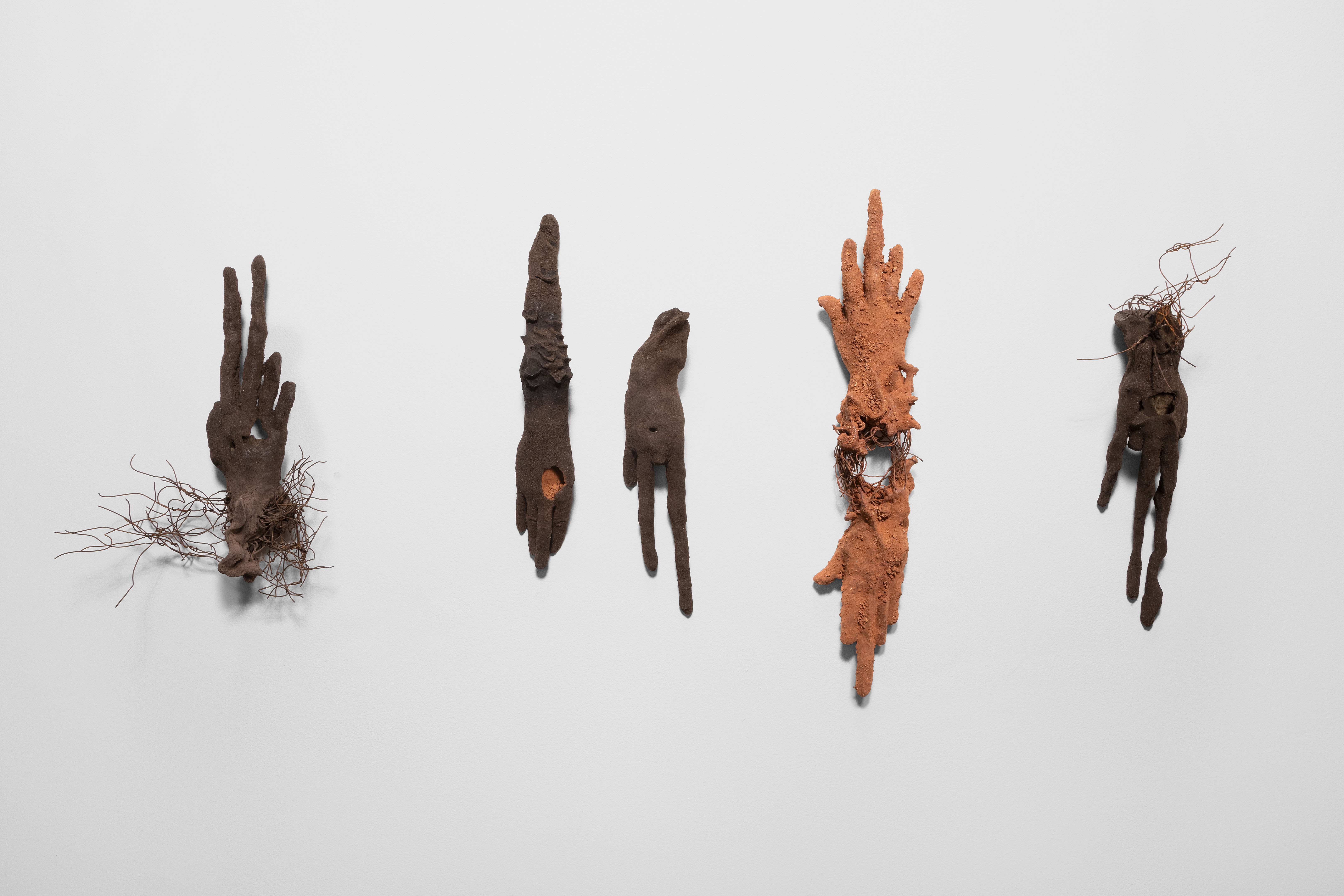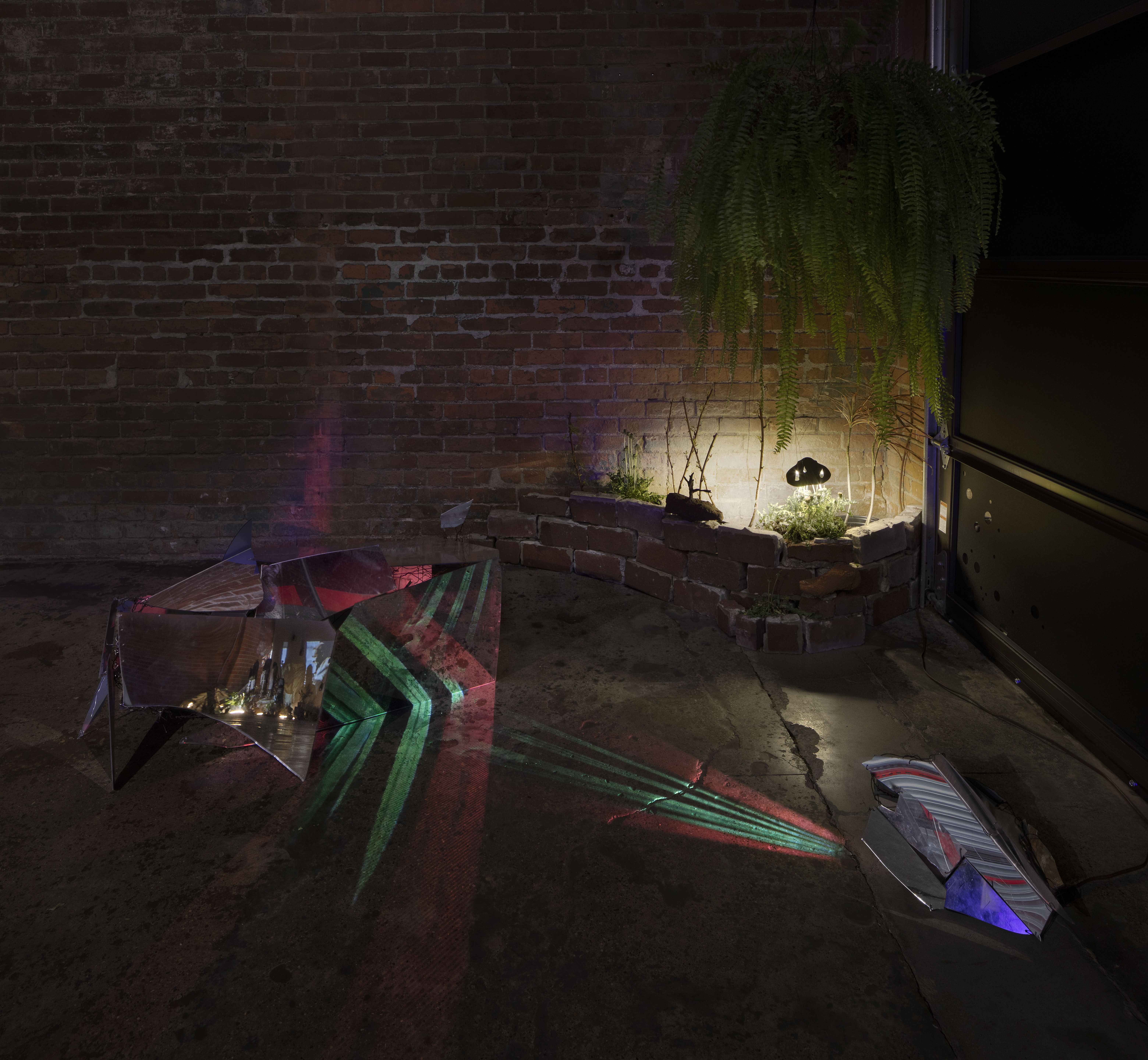
Matthew Kyba
June 24, 2024

How does this world end? A fiery apocalypse from an incoming asteroid? World War 3/4/5? Earth finally enacting revenge for our ongoing depletion of natural resources? While these prevailing theories regarding destruction are increasingly common, any shred of hope to counteract the ubermensch of capitalism, consumer culture, and the ongoing degradation of our planet seems more and more out of reach. Too often, contemporary art about humanity’s demise uses raw data and overwhelming research in an attempt to explain the true horror of our imminent extinction. Jasmine Murrell, a contemporary artist from Detroit, who is based in Brooklyn, helps sieve through the collective anxiety by reminding us that in order to survive, we must stop the domination and let nature dictate the future.

George Washington Carver was one of humanity’s greatest scholars whose agriculture work helped foster seminal farming techniques that put Earth first. He developed methods to restore soils depleted by continuous cotton farming by promoting crop rotation, and alternating cotton with sweet potatoes, peanuts, soybeans, and cow peas, which replenished the nitrogen and provided a diverse supply of food. Born a slave, George Washington Carver was barred from attending college, but eventually became Iowa’s first Black student. His arduous and nearly impossible journey was motivated by his underlying goal to conduct research and work based on an ideology that focuses on the harmonious collaboration between nature and farmer. Jasmine Murrell is also an avid gardener. She follows in Carver’s footsteps through her veneration of the soil and the plant, working with a new understanding of human/plant relationships.
Scattered throughout the exhibition Underfoot/Overhead at Wasserman Projects, Murrell’s slight but powerful interventions are effective through their disarming fragility. Small shrines of local flora have seemingly sprung up from what look like small piles of Earth around the edges of the gallery walls. Innocuous and mostly out of sight, these shadowy works exist as latent reminders that at the edge of our destruction, we can find solace through confrontations with human and plant mortality

Also growing out of the wall are sculptures. Far from just replicating body parts with novel materials to rehash conversations on materiality, Murrell’s extremities look like mummified hands, arduously stretched fingers and fists that are frozen in a slow crumble. Menacing rusted wire mesh sprout out of the gaping holes of each hand, adding to a sense of ultimate agony. The fingers are grotesquely twisted to unnatural lengths, distorted in painful poses. Installed side by side, each work approaches our deteriorating human connection to nature with a personal plea, conveying the despair shared in our mutual destruction.
Around the corner hangs seemingly endless lengths of VHS tape installed as a cavernous corner, using blue lights to relay a meditative sense when inside. Within Murrell’s visual lexicon resides an apt fondness for the subtlety of individualism. Potentially inspired by marginalized individuals who go unnoticed for their social contributions, one looks down to peer upon an almost indiscernible form laying rest on a mirror platform. Closer inspection yields soft human curves, clenched fingers, and even closed eyelids, all pressed and made from black dirt transported from areas within Detroit. Here, innocuously hidden and easily missable, lies the body weatherized, looking similar to those unfortunate souls who have been caught in Pompeii, calcified by Mount Vesuvius’s eruption. Tender and disconcerning, Murrell’s uncanny talent to convey humanity through organic materials is not beholden to familiar forms.

Step outside of the VHS tape cavern to find miniature plant life growing within brick and dirt ecosystems, set up alongside the edges and corners of the gallery. Peppered within them are integrated LCD screens unearthing from the ground and loose dirt formed into amorphous piles. Video projections of plant life and historical ephemera project from broken mirror glaciers, items familiar and repurposed from Murrell’s previous installations. The effect yields fragmented yet cohesive video, rendered in a discrete and non-invasive way. Here, natural destruction is not treated in a “national headlines” kind of way, but in a manner that balances the artist’s intent in not yelling, but instead whispering to viewers. It is perhaps a trial in non-aggressive ecological propaganda to be willingly accepted instead of forced.

The sparse placement of work throughout the margins of the gallery combined with its diminutive stature feels like love letters to our connection with plant and organic material. The low lighting from the small grow lights focus on baby plants slowly emerging from delicate seedlings. Intrinsic to humankind has always included a connection to our plant environment; each instance has been carefully constructed from the green thumbs of the artist’s hands to remind us about shared cycles and the fragility of life.
As the finale and ultimate crescendo, a dirt hand with a palm large enough to sit in erupts from the ground surrounded by dirt and plant life. The wall contains handmade ceramic vases that have tiny stems and leaves bursting out from them. A disjointed projection illuminates the scene, with rays of video overflowing the hand and bleeding onto the surfaces behind it. The video features scenes of the prominent Black scientist and inventor George Washington Carver interspersed with visions of hands tending to green matter. Like many important Black historical figures, his contributions are often overlooked, much like the vast, yet unseen, network of roots that feed the greenery we see above the soil. We are reminded, here more than ever, that our shared green future was, and still is, shaped only by hands that truly love and respect the natural world.
*This work was included as part of the group show Underfoot/Overhead at Wasserman Projects, along with work by Marina Zurkow and James Schmitz. The show was on view from April 5 - June 8, 2024.
All images are courtesy Wasserman Projects, Detroit. Credit: PD Rearick.